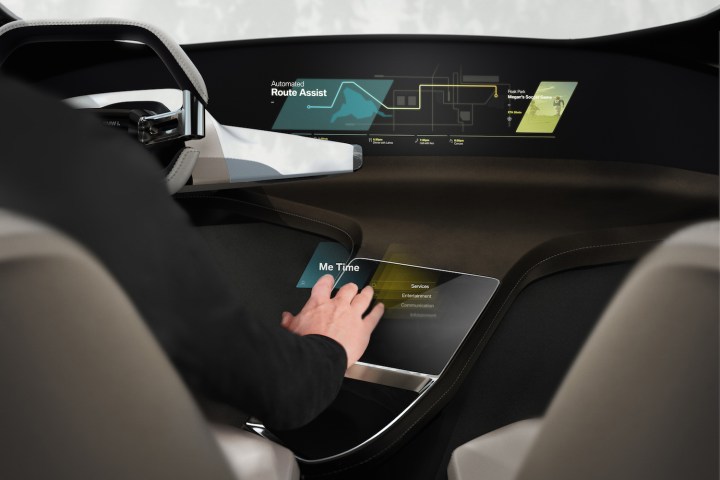
Among the automakers pressing hard into trend-setting tech and consumer behavior, BMW has earned its seat at the table with services like ReachNow and features like gesture control. In January, BMW will take the latter concept to a new level with HoloActive Touch. In what amounts to a virtual touchscreen, HoloActive is a free-floating display that responds to finger gestures with tactile feedback.
The new technology combines a heads-up display, gesture control, and touchscreen operation for a new experience — one without direct physical contact. Drivers perceive a tangible response from the system, like a traditional touchscreen, but they are really just prodding thin air.
HoloActive Touch is the latest development in a series of gesture command systems that was first applied on the 2016 production 7 Series and has since been incorporated on the new 5 Series. During 2016’s CES, BMW introduced its AirTouch technology that responded to simple gestures made with an open hand. Users could activate control pads on a large panoramic display in the dashboard without having to touch the control interface.
HoloActive now projects a free-floating display within the cabin instead of hovering over the infotainment screen. Drivers can then customize the control pads via an image next to the steering wheel. A camera registers finger movements on these control pads, telling the system to emit a pulse and active the intended function.
Without any hands-on interaction, it’s a bit difficult to judge whether BMW’s HoloActive Touch is an effective system or not but look for our feedback following an in-person demo in early January.
Editors' Recommendations
- BMW shows off an electric car with color-changing paint at CES 2022
- At CES 2020, BMW will make sleeping in a city car sound attractive


